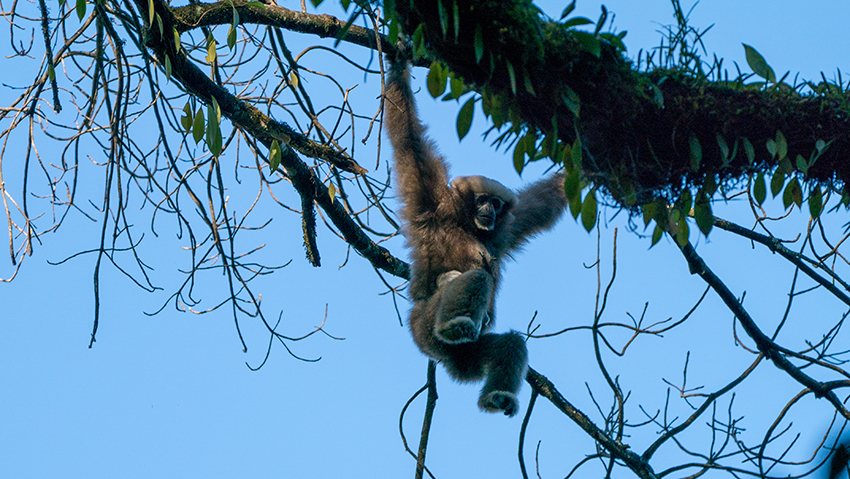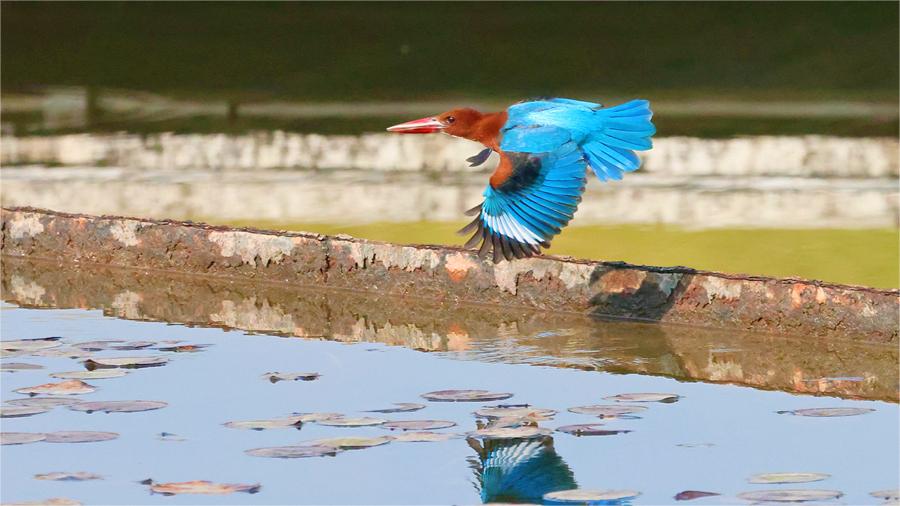New distribution area of Gaoligong hoolock gibbon found in SW China's Yunnan
A new distribution area of the Gaoligong hoolock gibbon was discovered in Yingjiang county, southwest China's Yunnan Province, according to the Tongbiguan provincial nature reserve management bureau on Jan. 16, 2024.

Photo shows two Gaoligong hoolock gibbons. (Photo/He Haiyan)
The new distribution area of the hylobatidae species is about 30 kilometers away from the county's Sudian township, an original habitat of Gaoligong hoolock gibbons, said Guan Zhenhua, an assistant research fellow at Southwest Forestry University.
The Gaoligong hoolock gibbon with distinguished white eyebrows is currently the only ape named by Chinese scientists. As a national first-class protected animal in China, it is predominantly found in Yunnan, mainly in Longyang district in Baoshan city, Tengchong city, and Yingjiang county in Dehong Dai and Jingpo Autonomous Prefecture.

Photo shows a Gaoligong hoolock gibbon. (Photo/He Haiyan)
Yingjiang county is home to about 100 Gaoligong hoolock gibbons in 29 families, accounting for over 60 percent of the total population of the species nationwide.
"As a typical small arboreal ape, the Gaoligong hoolock gibbon faces threats like a small population, habitat fragmentation, and poaching. It was listed as a rare species that needs priority protection in Yunnan," said Zhang Lixiang, an engineer at the Yingjiang branch of the management bureau of the Tongbiguan provincial nature reserve.
In 2023, the branch implemented the Gaoligong hoolock gibbon protection and habitat restoration project of the prefecture, and grasped the population and protection status of the species, providing reliable basic data for the effective conservation of the species.

Photo shows a Gaoligong hoolock gibbon. (Photo/He Haiyan)

Photo shows a Gaoligong hoolock gibbon. (Photo/He Haiyan)
Photos
Related Stories
- National park construction helps rare gibbon population climb
- Global Gibbon Network established in S China's Hainan
- Take a closer look at skywalker gibbons in China's Yunnan on International Gibbon Day
- Hainan gibbons welcome new addition to family living on southern China’s tropical island
- Survey of endangered gibbon species launched in southwest China
Copyright © 2024 People's Daily Online. All Rights Reserved.









